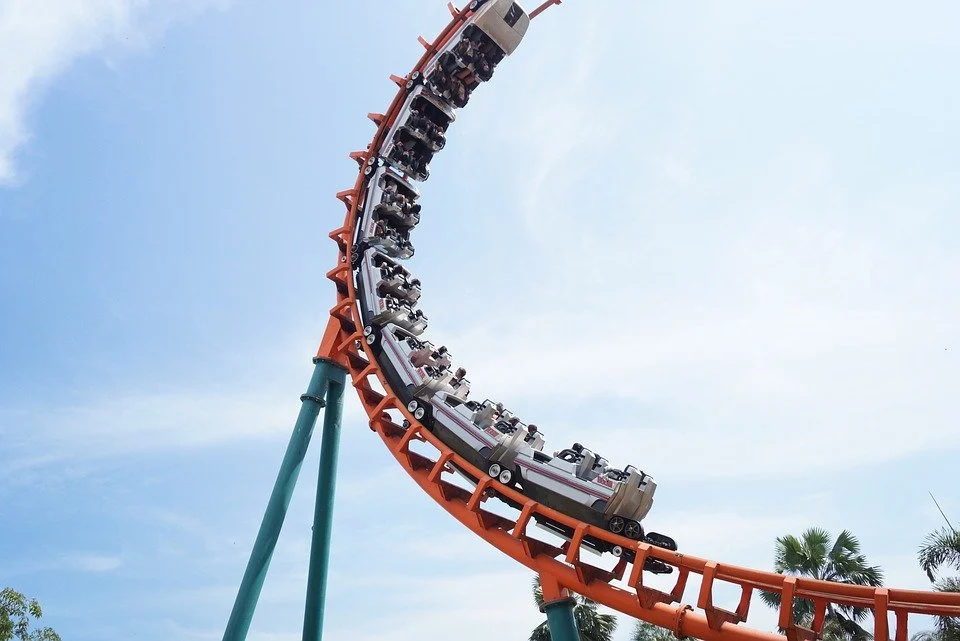Roller coasters are one of the most popular and exciting amusement park rides, providing a thrilling experience for millions of riders worldwide. These rides rely on the laws of physics to create their unique dynamics, including gravity, centripetal force, and friction (Amusement Park, n.d.). Understanding the physics behind roller coasters is essential for designing safe and exciting amusement park rides.
Gravity
Gravity is the fundamental force that governs the motion of roller coasters. As the roller coaster train is released from the top of a hill, it accelerates downwards due to the force of gravity, which is fixed at 9.8 m/s2 or 1 G (Bilyeu, 2014). The acceleration of roller coasters is typically measured in G-forces, which represents the constant rate of acceleration due to Earth’s gravity.
During a large drop, riders may experience weightlessness when they are subjected to G-forces between -1 and 1. Low G-forces move blood to the brain, while high G-forces, felt during turns, launches, and loops, can cause blood to rush to riders’ feet. As the roller coaster train falls, its speed increases, reaching its maximum speed at the bottom of the hill. However, this speed is limited by several factors, including the train’s mass, the height of the hill, and the force of friction between the train’s wheels and the track.
Centripetal Force
Roller coasters rely on centripetal force to maintain their course along the track, in addition to gravity. Centripetal force is the force that pulls an object towards the center of a circular path, and in the case of roller coasters, it is provided by the track’s design. The track is shaped to create a circular path, and the train’s curvature causes it to experience an inward force, pulling it towards the center of the circle (Roller Coasters, 2022). This force must be balanced by other forces, including gravity and friction, to keep the train on the track.
It’s important to note that for circular motion to occur, the roller coaster train must be traveling with a high enough tangential velocity. This is because the centripetal force required to maintain circular motion is proportional to the square of the velocity of the train, divided by the radius of curvature of the track. This relationship is expressed by the equation a = v2/r, where “a” is the centripetal acceleration, “v” is the tangential velocity, and “r” is the radius of curvature of the track (Urone & Hinrichs, 2020). Therefore, roller coaster designers must carefully consider the relationship between velocity, radius, and centripetal force when designing their rides to ensure that the train can safely maintain circular motion along the track.
Friction
Friction is the force that resists the motion of objects in contact with each other. In the case of roller coasters, friction plays a crucial role in ensuring the safety of riders. Friction between the wheels of the roller coaster train and the track helps to slow down the train as it travels through the ride’s twists and turns (Brakes, 2023). Additionally, friction between the rider’s body and the roller coaster seat helps to keep the rider in place during the ride.
The force of friction between the train’s wheels and the track is determined by several factors, including the materials used for the wheels and track, the weight of the train, and the speed at which the train is moving. To ensure the safety of riders, engineers must carefully design the roller coaster’s track and train to balance the forces of gravity, centripetal force, and friction (Harris & Threewitt, 2007).
The physics of roller coasters is not just a matter of science, it’s a matter of pure exhilaration. By harnessing the power of gravity, centripetal force, and friction, roller coaster designers create thrilling rides that leave millions of riders screaming for more. From the tallest drops to the wildest loops, roller coasters never fail to provide an unforgettable experience. So buckle up, hold on tight, and get ready to defy gravity (only figuratively, of course) with the physics of roller coasters!






